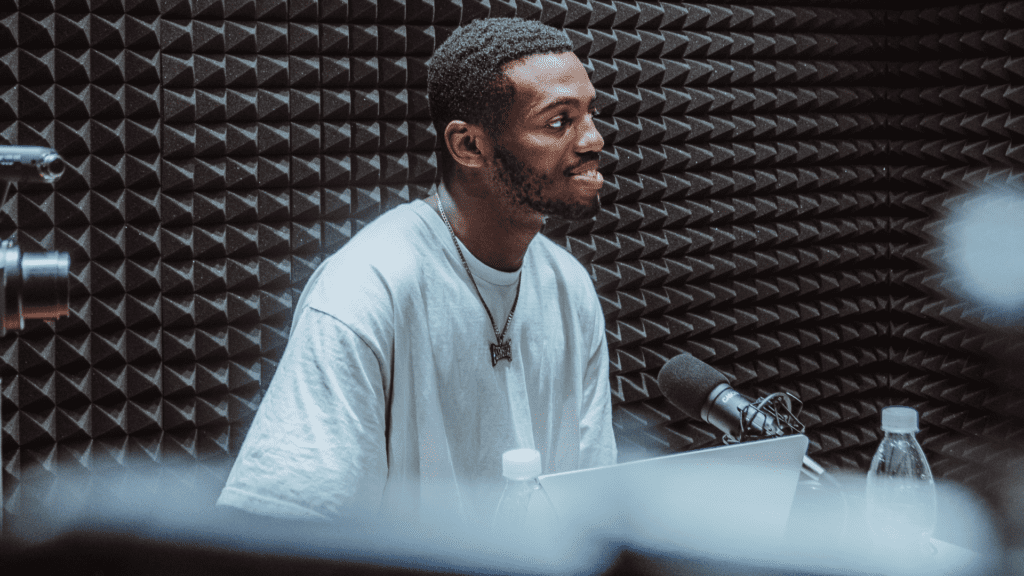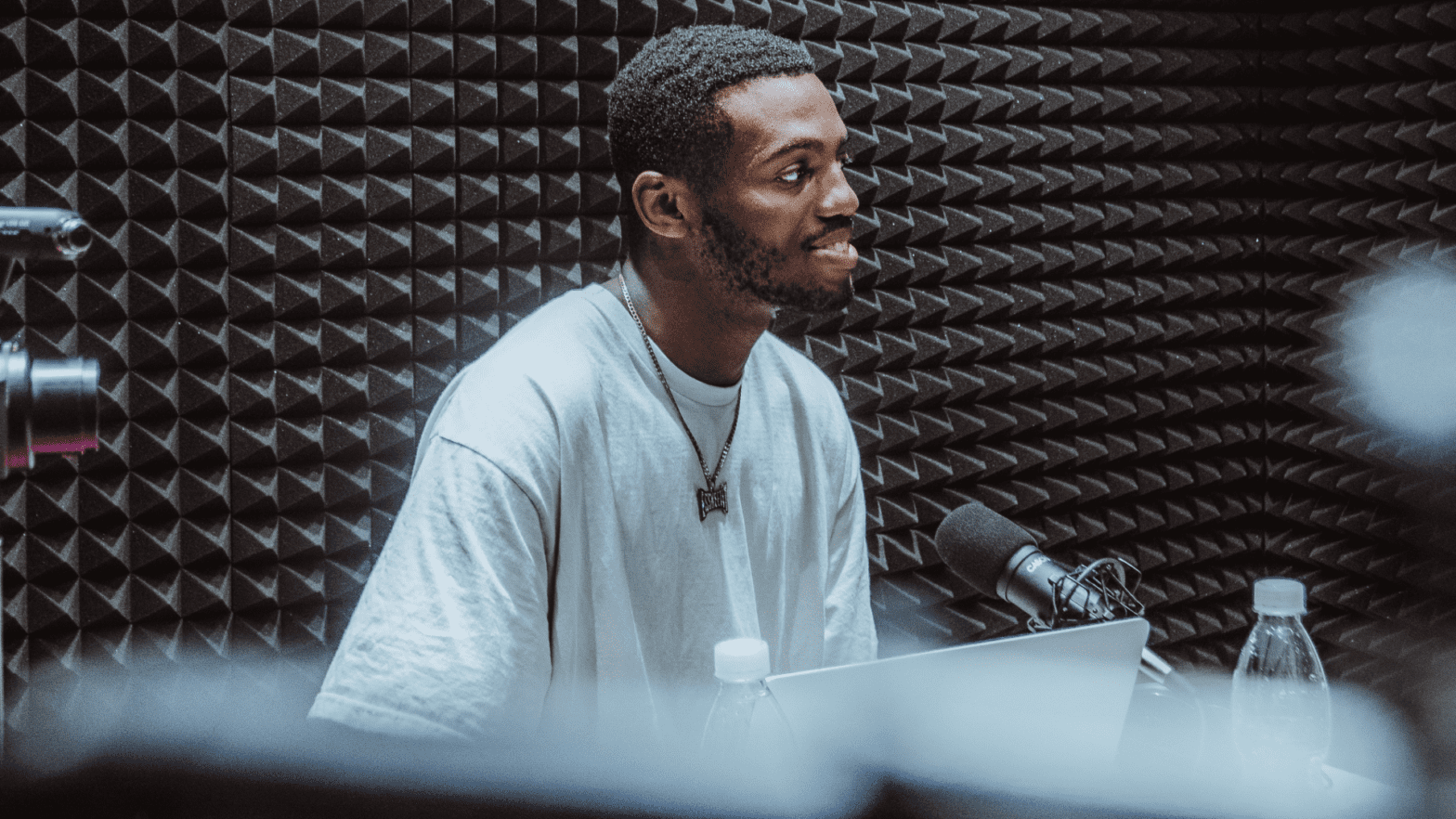
Over the past several years, we’ve witnessed a new wave of TV celebrities and creators launch podcasts. From Dax Shepard’s “Armchair Expert” and Jada Pinkett Smith’s “Red Table Talk,” to Alec Baldwin’s “Here’s the Thing” and Emma Chamberlain’s “Anything Goes,” Hollywood’s biggest stars are coming out of the woodwork to talk about their personal lives, chat with famous guests, and spill the tea on industry gossip.
But of course, you don’t need millions of fans to start a podcast—not everyone can become Jada Pinkett Smith overnight. If you’re already a YouTube creator familiar with the platform, consider launching a podcast channel to drum up additional engagement. YouTube has even created a podcast page for this very purpose, as more creators have started dabbling in the audio-first medium—likely the first of many new features to support a growing podcaster community online.
Before you dive in, here are some key factors to keep in mind when debuting a YouTube Podcast:
Podcasting is the new social frontier
It feels like it was just yesterday that Spotify beat Apple Podcasts in listenership. The tables have now turned, with YouTube boasting the most popular podcasting platform in the country: 24.2% of listeners say they use YouTube most, ahead of Spotify (23.8%) and Apple Podcasts (16%).
Overall, the number of monthly U.S. podcast listeners is expected to jump 6.1% year-over-year to reach a total of 125 million people in 2022. With the market set to double in size by 2024, the future is bright for America’s burgeoning podcasting industry.
Although radio broadcasting has existed since the early 1900s, and internet radio came on the scene more than 20 years ago, podcasting takes a completely different form than its predecessors. While radio is a one-way street, podcasters can directly engage with their audiences to create interactive communities.
It may be more accurate for us to call it a new type of social media. Instead of posting pictures and receiving likes, you can upload digital recordings to share your hot takes, spark online debates and, ultimately, grow your subscriber base. By attracting followers with personality over trendy editing styles, the medium allows you to be more authentic to yourself and to your subscribers.
Brands want to partner with podcasts
Want to make more money on YouTube? Podcasting might be the answer.
Increasingly, brands are looking to promote their products on podcasts to reach new customers for one simple reason: It works. According to a 2021 report, podcast ads are the most recalled ad types, generating more than four times better brand recall than display ads. It’s a known fact that the vast majority of subscribers don’t bother to skip ads either—regular listeners sit through at least 80% of each episode, regardless of length.
Podcast content also tends to be more unfiltered, which helps creators foster a stronger connection with their follower base. This means that podcast episodes typically drive more engagement than traditional video uploads—another reason why brands love to partner with podcasts.
Moreover, some creators actually use podcasts as a supplementary source of content for their main channels. Take Lauren Riihimaki. She’s best known for her lifestyle, fashion, and DIY content on YouTube, but she also hosts the WILD ‘TIL 9 podcast with her boyfriend, where they discuss more mature topics like relationships and dating advice.
Like Lauren, you can choose to launch a podcast as a secondary channel to offer a more intimate look into your personal life. Podcasts also enable you to explore a niche topic that may be too specific for your main channel. By creating a sub-community of subscribers who are interested in the same content, podcasts can bring people closer together. Brands love to work with creators who have access to this kind of tight-knit community. An engaged follower base is more likely to support a creator’s sponsor; and podcast episodes offer brands the perfect space to promote their products.
Less scripted, more spontaneous
If you’re somewhat experienced as a creator on YouTube, you might assume that podcasting can’t be all that different from what a traditional video upload entails. But nothing could be further from the truth. Sure, you’ll need to record your episode, edit the content to some extent, and add a snappy title to generate views—but the similarities between videos and podcasts end there.
For instance, podcasting involves way less editing. There may be a general outline or script prepared, but to keep listeners engaged, you’ll have to rely on the unexpected twists and turns of spontaneous conversation.
The Bad Friends podcast, hosted by Bobby Lee and Andrew Santino, is a great example of how personality drives audio-first content. The pair often explores a random topic or experience—like going to a Korean spa, designing a tombstone, and marrying a robot—and lets the natural flow of their conversation dictate their content, making their channel all the more unique (and hilarious!).
If you’re serious about launching a podcast, you might want to consider practicing with your co-hosts first to see if there’s a comedic spark. Make sure you give your channel time to grow; and try to stick to a consistent schedule so that your listeners can tune in early. With how fast the podcasting industry is growing, it’s smart to start now and find your footing when you can. Set the bar high and the rest will follow!
